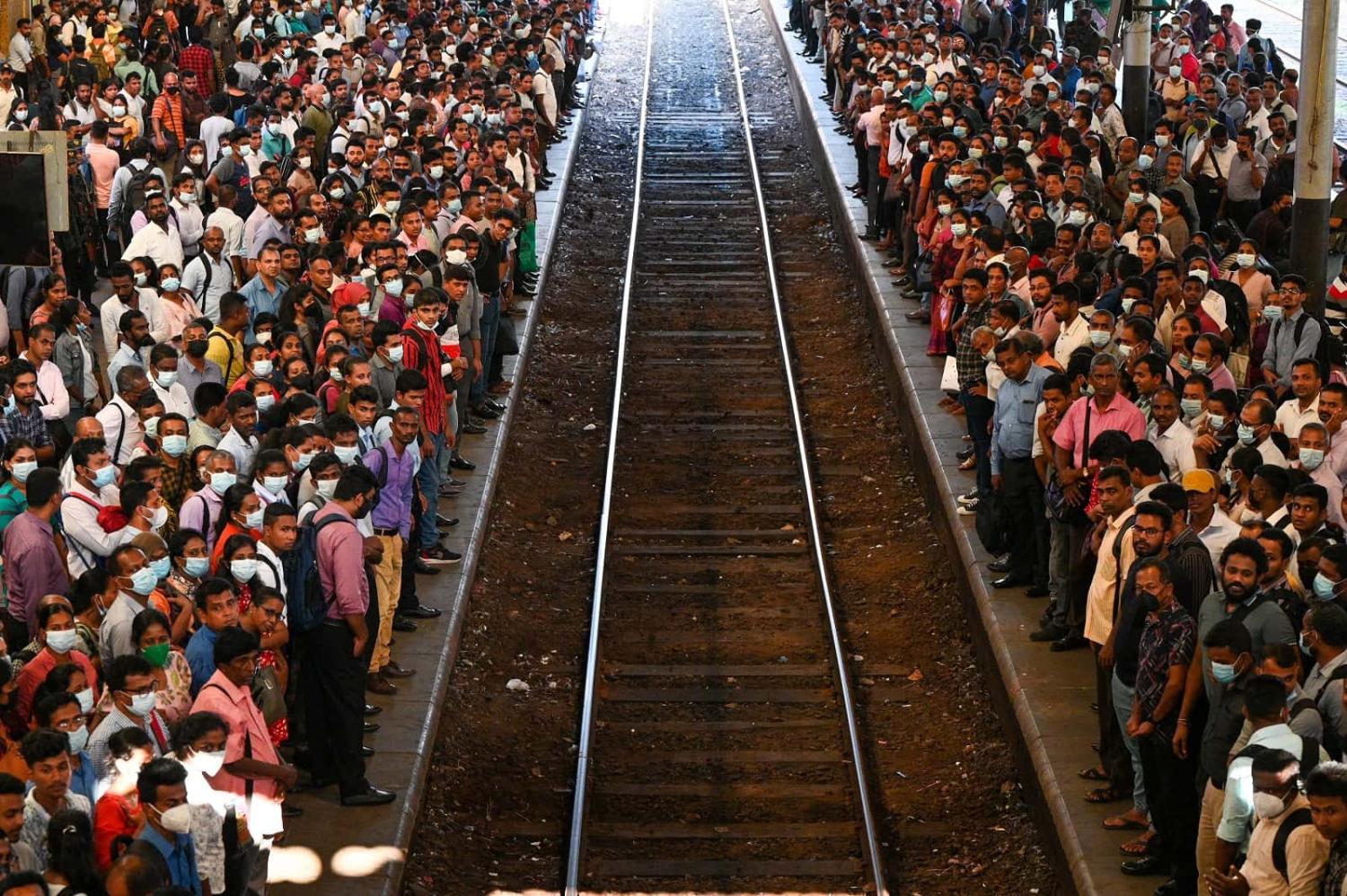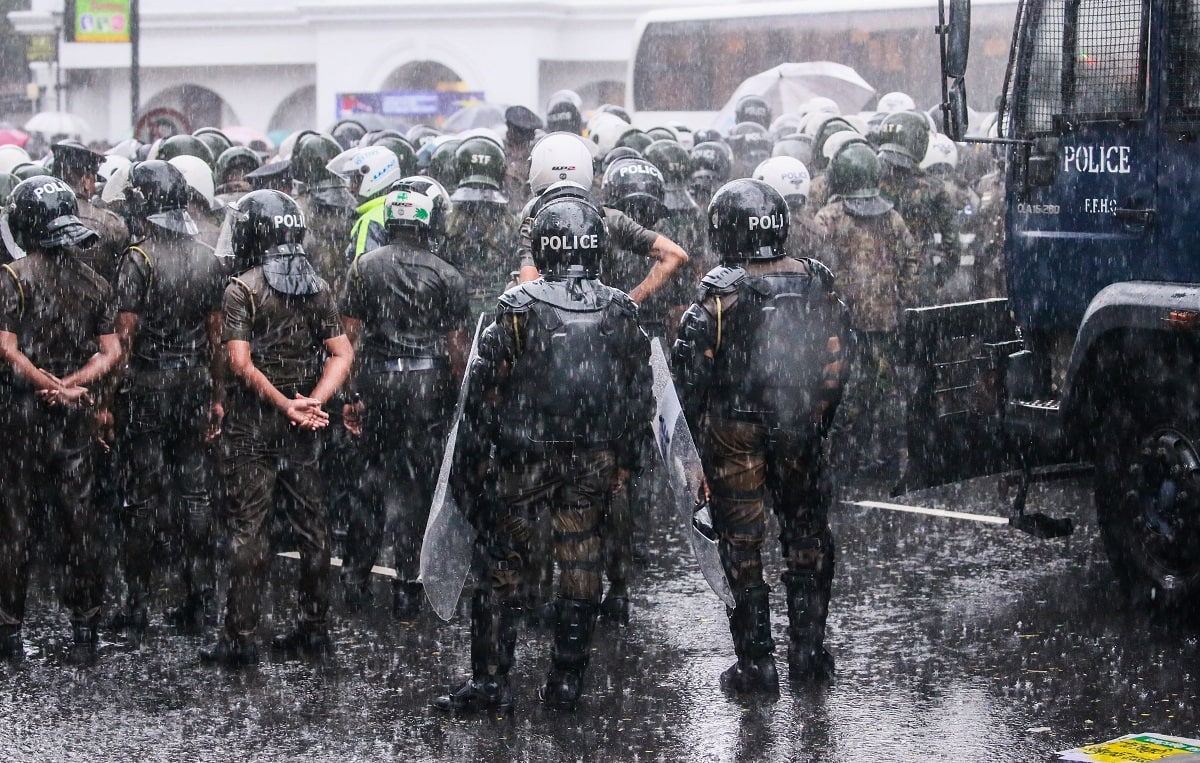With its economic and political crisis in the rear-view mirror,
Colombo has the chance to reposition itself regionally.

About a year ago, Sri Lanka experienced an unprecedented political and economic crisis involving the virtual cessation of economic activity and a popular revolt against the government. By April 2022, Sri Lanka had almost entirely depleted its foreign exchange reserves. The government defaulted on its debts, and with no way to import fuel or other essentials, the economy essentially ground to a halt.
The economic meltdown triggered a popular revolt (known in Sri Lanka as the Aragalaya or “Struggle”) in which Sri Lankans from all over the country rose up in protest, ultimately storming the presidential palace. President “Gota” Rajapaksa fled the country and later resigned.
Although it seemed like it would be years before Sri Lanka returned to normality, the country is now making an extraordinary recovery under an unexpectedly reformist leader. What does this mean for Sri Lanka’s future strategic options and its role in the region?
Many foreign analysts were quick to label the crisis as a Chinese “debt trap”, but the reality was more complex. Certainly, successive Sri Lankan governments, particularly under Gota and his brother Mahinda Rajapaksa, were enthusiastic supporters of China’s Belt and Road Initiative. Huge amounts were borrowed – and squandered – on vanity projects of doubtful economic feasibility such as the Colombo Port City, Hambantota Port and Airport and the Colombo Lotus Tower.
These were accompanied by a river of corrupt payments to the ruling Rajapaksa family downwards to local politicians and bureaucrats. It mattered not whether those projects would make money: the Chinese ATMs would spit out cash forever. The party came to an end when a series of shocks hit energy prices and earnings from tourism: terrorist bombings in April 2019, the Covid-19 pandemic and the Ukraine war.
But despite the “debt trap” narrative, much of Sri Lanka’s indebtedness was a legacy of its 30-year civil war. Debts to China only represented some 20 per cent of all Sri Lanka’s external debt, although China was by far the largest lender. The tsunami of Chinese money came on top of other debt, but it also corrupted the entire political system.

In many ways, Sri Lanka has had a lucky escape from the crisis. India took the lead in assisting the country, aware of the long-term impact to itself of an impoverished and unstable neighbour. India provided emergency funding and other essential assistance, helping to restart the economy while a debt deal was negotiated with the International Monetary Fund (IMF) and other lenders.
Another lucky break was the elevation to the presidency of Ranil Wickremesinghe, a long-serving politician without his own political party. He has provided stability and good judgement through protracted debt negotiations with the IMF and other lenders, which unlocked a US$3 billion funding deal in March 2023. Although China finally agreed, Beijing was less than helpful, excluding much of its lending from debt rescheduling. With the economy restarted, the IMF now expects a resumption of economic growth in 2024.
New anti-corruption laws have been passed and the Central Bank will be made fully independent to prevent the meddling that occurred during the former government. But much difficult economic restructuring remains to be done. This includes politically unpopular acts such as reducing subsidies and selling off bloated state-owned enterprises. Sri Lanka’s long-term economic health will depend on these difficult steps.
Despite the crisis, Sri Lanka remains an ambitious country, still aspiring to become the “Singapore of the Indian Ocean” as a regional shipping and financial centre, including by taking advantage of its location close to the major sea lanes and Colombo’s role as one of the top ports of the Indian Ocean and, indeed, the world.
But Sri Lanka’s ability to meet its ambitions will depend on addressing its permanent foreign policy problems: how to find the right balance between its huge neighbour and other partners; and how to assuage India’s anxieties while pursuing its own core interests.
The previous government under Gota Rajapaksa tried to declare Sri Lanka “neutral”, while also having an “India first” policy and simultaneously arguing that China’s BRI delivered “the best possible results for the country”. But the circle could not be squared with this empty rhetoric. One can’t maintain “neutrality” without the money or power to back it up.
As Sri Lanka emerges from the 2022 crisis, the government will again need to consider how to frame its place in the world. Wickremesinghe is reputedly more comfortable working with Western partners compared with the Rajapaksas. But it is much more than that. Sri Lanka simply can’t afford to make itself the object of a zero-sum game between India and China.
Maximising Sri Lanka’s autonomy in light of its geographic location will involve some difficult choices. To build a stable and mutually beneficial security relationship with India, Sri Lanka will almost certainly have to choose to subordinate some minor interests to India. For one thing, Sri Lanka probably can’t afford the controversies that accompany visits by Chinese submarines or “research” vessels, or rumoured proposals for Chinese satellite stations or radar stations. Sri Lanka pays a high price in allowing these unnecessary irritations to stoke Indian anxieties, while gaining little that is meaningful in return. Letting itself be perceived as a launching pad for China’s regional security ambitions is never going to be in Sri Lanka’s interests.
Sri Lanka will also need to find the right formula for sustainable economic development, which will include taking investment from partners such as China, India, Japan and Europe. In addition to diversifying its investment partners, Sri Lanka needs to establish processes to ensure that investments are made on transparent and economically beneficial terms, while avoiding strategically sensitive areas as much as possible.
None of this will be easy, but the 2022 crisis should be seen as an opportunity to reposition Sri Lanka’s stance. Rebuilding Sri Lanka’s economy has required difficult decisions, identification of priorities and creating better decision-making processes. Building a more sustainable strategic posture will also require Sri Lanka to make difficult decisions about how to achieve its most important priorities in economic development and security.
